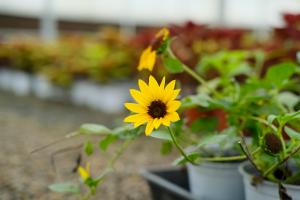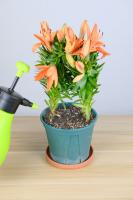What Is Good Spacing for Tomato Plants
Tomatoes are one of the most popular vegetables to grow in home gardens, and for good reason. They are versatile, packed with nutrients, and taste delicious. However, to produce the best yield and quality of tomatoes, it is important to pay attention to the spacing between each plant. In this article, we will explore what is considered to be good spacing for tomato plants.
Factors That Affect Tomato Plant Spacing
Before we dive into specific spacing recommendations, it is important to understand the factors that affect tomato plant spacing. These include the variety of tomato being grown, the size of the mature plant, the growing conditions, and the method of cultivation.
For example, indeterminate tomato varieties that continue to grow and produce fruit throughout the growing season will require more space than determinate varieties that have a limited growth habit. Similarly, plants grown in containers or raised beds may require less space than those grown in a traditional garden bed.
Recommended Spacing for Tomato Plants
While there is no one-size-fits-all answer to the question of tomato plant spacing, there are some general guidelines that can be followed. The recommended spacing for tomato plants typically ranges from 18 to 36 inches (45 to 90 centimeters) apart.
If planting in rows, space plants 24 to 36 inches (60 to 90 centimeters) apart. For non-row planting, space plants at least 18 inches (45 centimeters) apart on all sides. This ensures that each plant has enough room to grow and receive adequate sunlight, water, and nutrients.
Determining Tomato Plant Spacing
To determine the best spacing for your tomato plants, consider the mature size of the variety you are growing. Follow the spacing guidelines outlined by the seed supplier, or consult a gardening guide for guidance.
In addition, consider the layout of your garden or growing space. If you are planting in rows, make sure there is enough space between each row to allow for easy access to the plants. If planting in a raised bed or container, make sure there is enough room for each plant to spread out and develop healthy roots.
The Benefits of Proper Tomato Plant Spacing
Proper tomato plant spacing is critical for several reasons. It helps prevent overcrowding, which can lead to competition for resources and poor development of the tomato plants. It also promotes better air circulation, which helps reduce the risk of fungal diseases.
In addition, proper spacing can help improve the quality and yield of the tomato plants. By providing each plant with enough space to grow and develop a healthy root system, they can better absorb water and nutrients, leading to stronger stems and larger, juicier fruit.
Conclusion
In conclusion, good spacing for tomato plants is essential for healthy growth and a bountiful harvest. By following the recommended spacing guidelines and taking into account the factors that affect spacing, you can ensure that your tomato plants have the best chance of success. With proper spacing and cultivation, you can enjoy fresh, delicious tomatoes all season long.

 how many times do yo...
how many times do yo... how many planted tre...
how many planted tre... how many pine trees ...
how many pine trees ... how many pecan trees...
how many pecan trees... how many plants comp...
how many plants comp... how many plants can ...
how many plants can ... how many plants and ...
how many plants and ... how many pepper plan...
how many pepper plan...






























